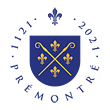Graphic art collection
Similar to most old, organically created collections, the collection of drawings and graphic art has been part of the Strahov library since its creation. During the re-cataloguing of the library collection in the first quarter of the 20th century, several convolutes of drawings and graphics were newly signed according to the new system; in particular one of the masterpieces in the Strahov collections, a collection of drawings by Giulio Romano and, for the Czech area a most significant sketchbook by Jan Willenberg. Convolutes of graphic art are mainly represented by collections of Dutch productions containing, among others, works by Václav Hollar, with the other works being of a rather lesser quality.
The collection of graphic art mainly used to be stored in the drawers of the cabinets in the inner connecting corridor between the Theological Hall and the Philosophical Hall, partly in a small depository adjacent to the southern end of the Philosophical Hall. Several pieces were presented on the premises and in the musical archives.
After the liquidation of the monastery in 1950 and the subsequent establishment of the Museum of Czech Literature (1953), the vast majority of the drawings and graphics was taken over by the Museum (only several items were acquired by the National Gallery), while the works on display in the music archives were moved to the National Museum at the same time as the music sheets.
Mechanically separated in this way, the graphics that "got lost" in the archives thus found their way to the collection of Premonstratensians - Strahov Monastery in the National Archives. At the Museum of Czech Literature, the Strahov collection was merged with other collections from different locations. In the process, whole units that could have contributed to a better understanding of the collection genesis were disintegrated. When the monastery building was returned to the Premonstratensians at the beginning of the 1990s, the graphic art collection, except for the signed convolutes mentioned above, was practically non-existent. The reconstitution of the collection was possible thanks to the restitution that took place in two stages.
About one half of the present collection of graphic art and drawings was restored to the canonry during the 1990s. The initial decision to merge the collection with the art collections of the monastery was changed at the beginning of the millennium in favour of a more historically accurate classification among the collections of the Strahov library; this solution is supported by the fact that a large part of the collection consists of book graphics. In 2010-2011 the second stage of restitution was carried out during which another part of the Strahov collection was successfully identified. In view of the fact that only a part of the graphics was inventoried and the file cards were not part of the restitution, the decision was made to inventory the graphics again in an electronic database where the old inventory numbers and signatures may also be found. Since 2008 more than 42,000 records have been processed, the collection consisting of about 50,000 items.
Hedvika Kuchařová

